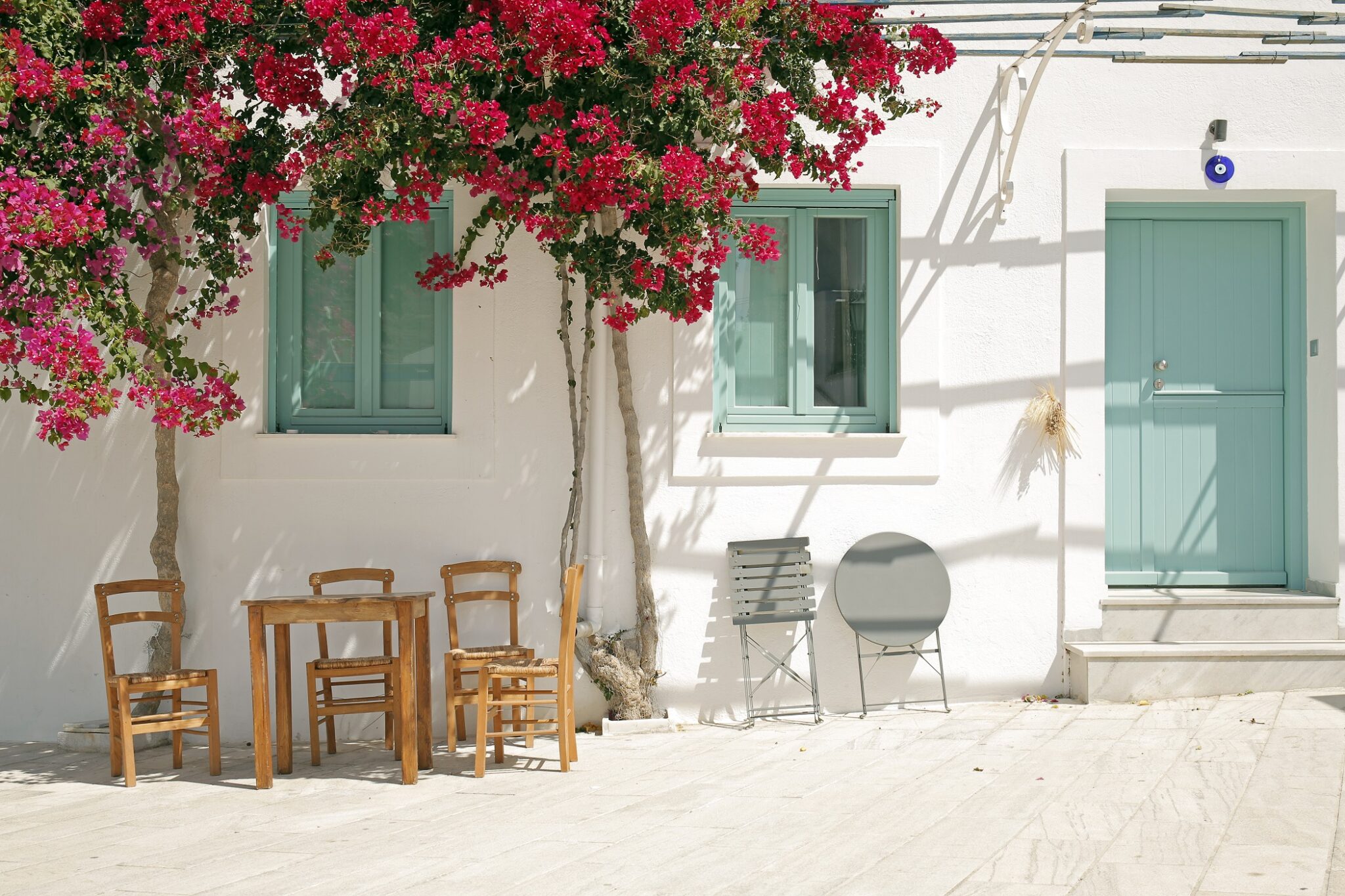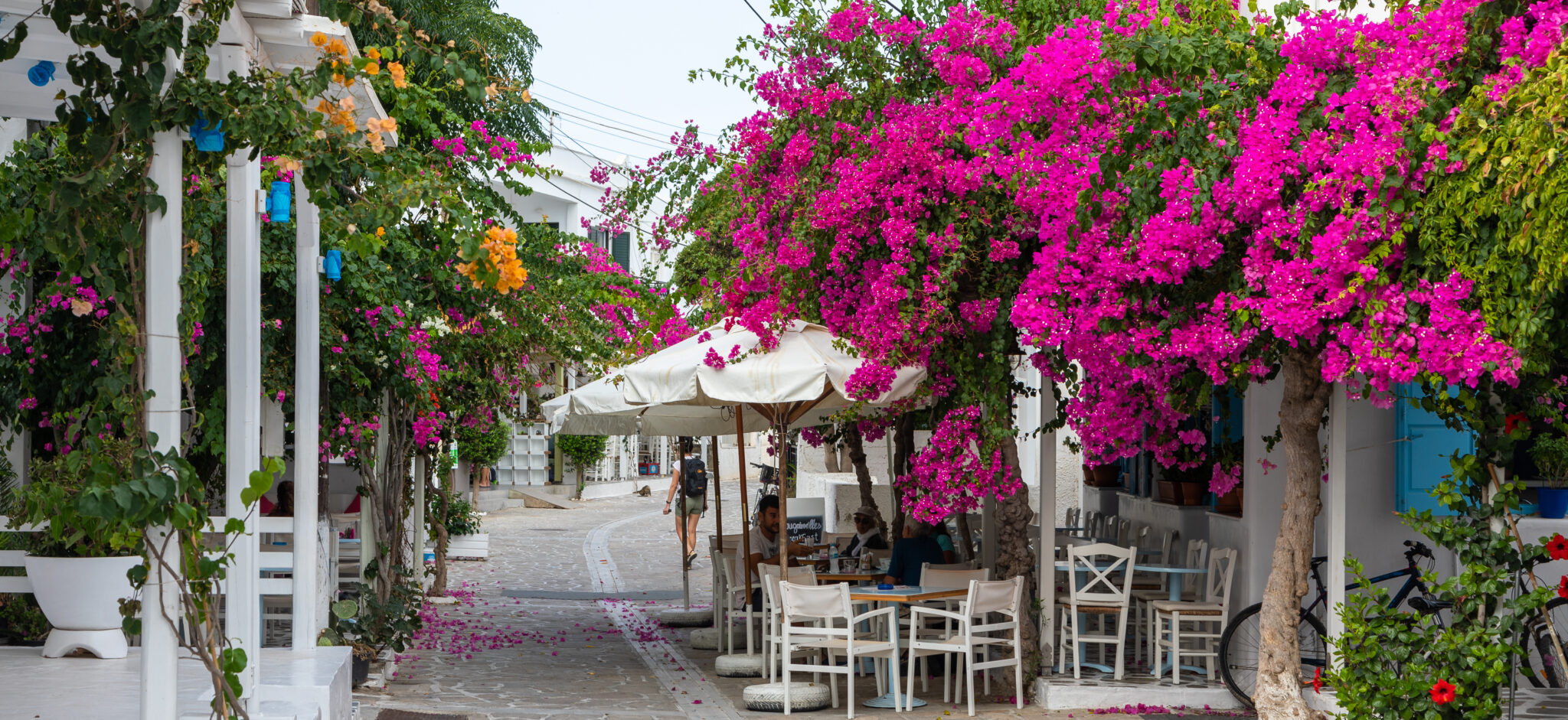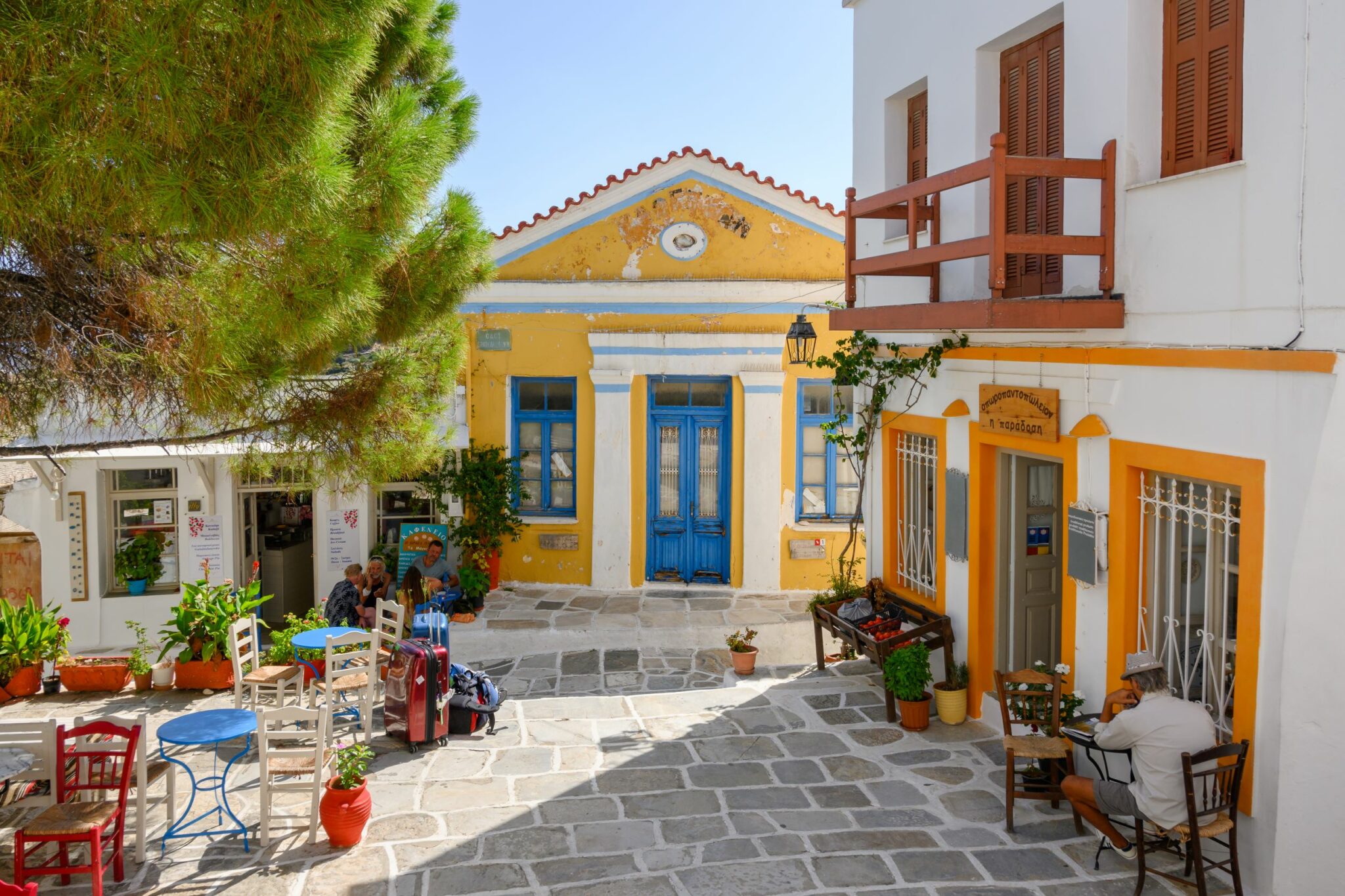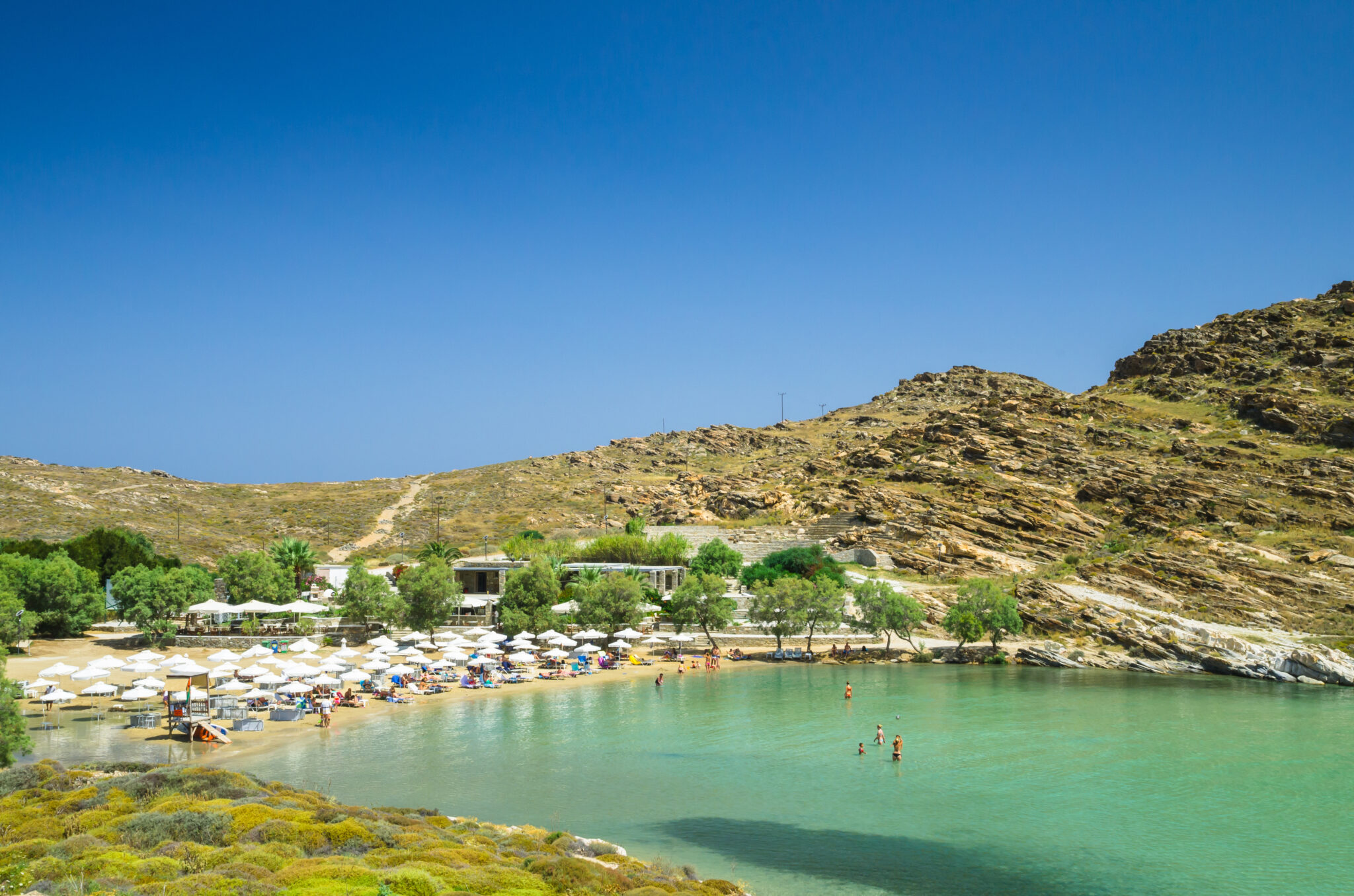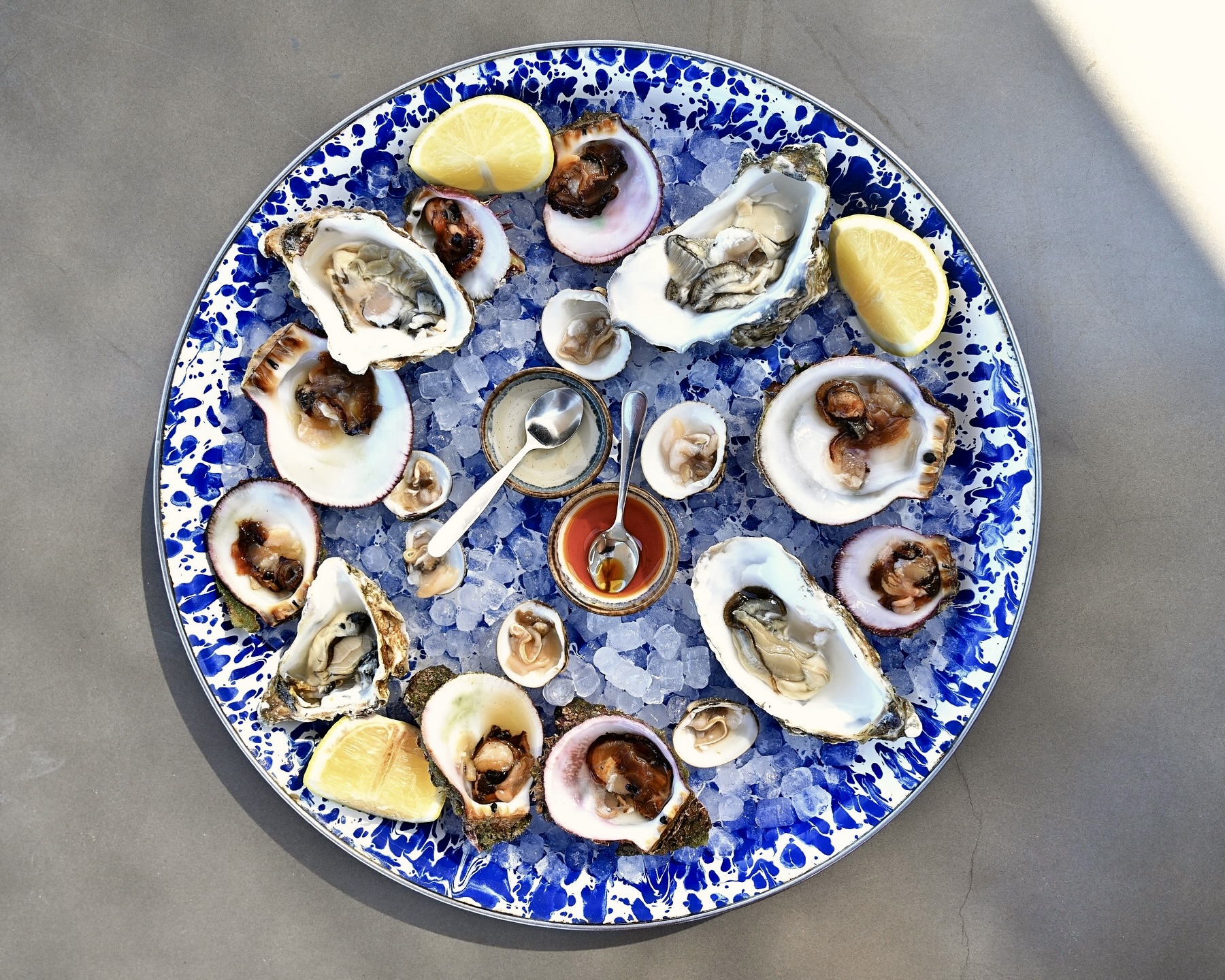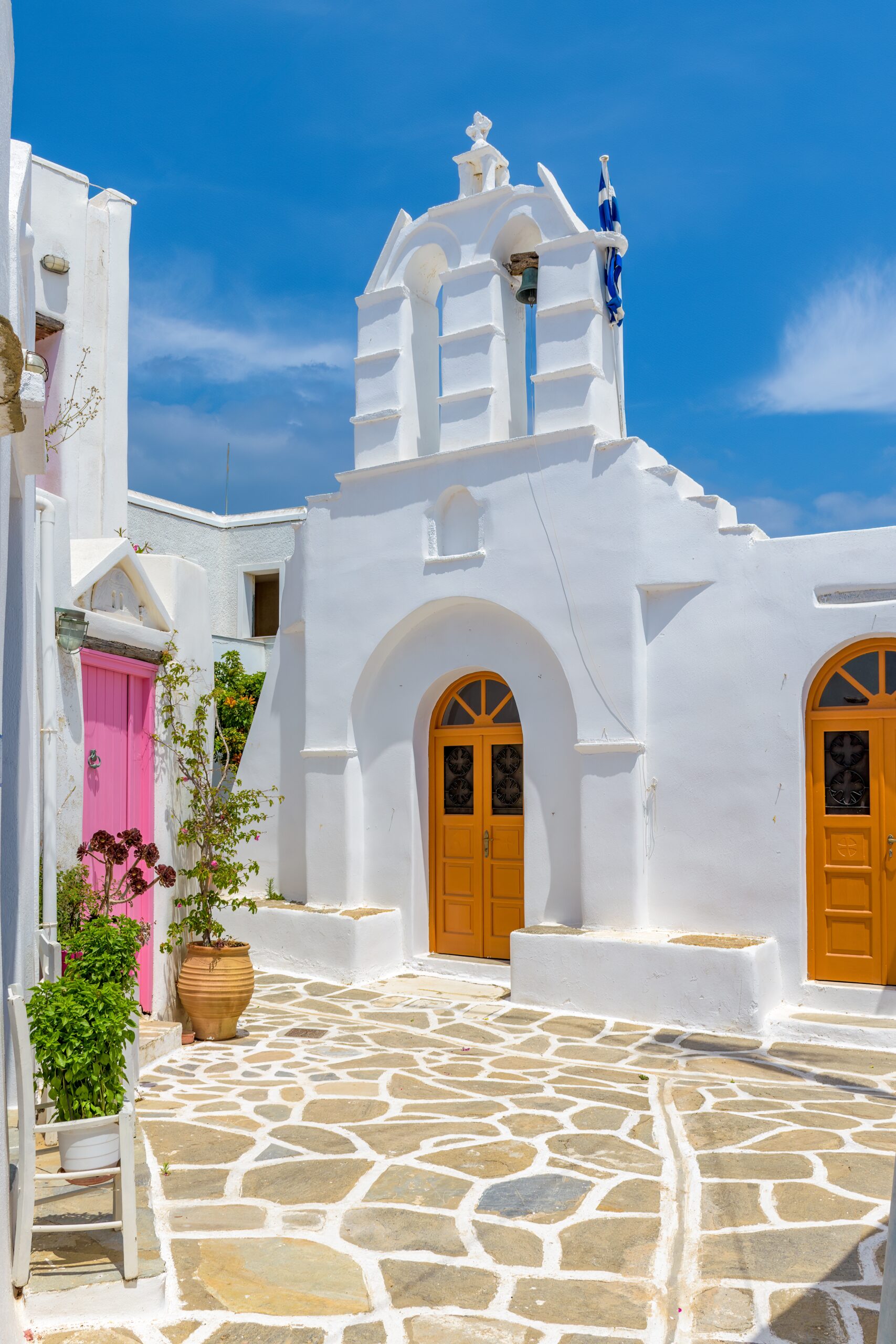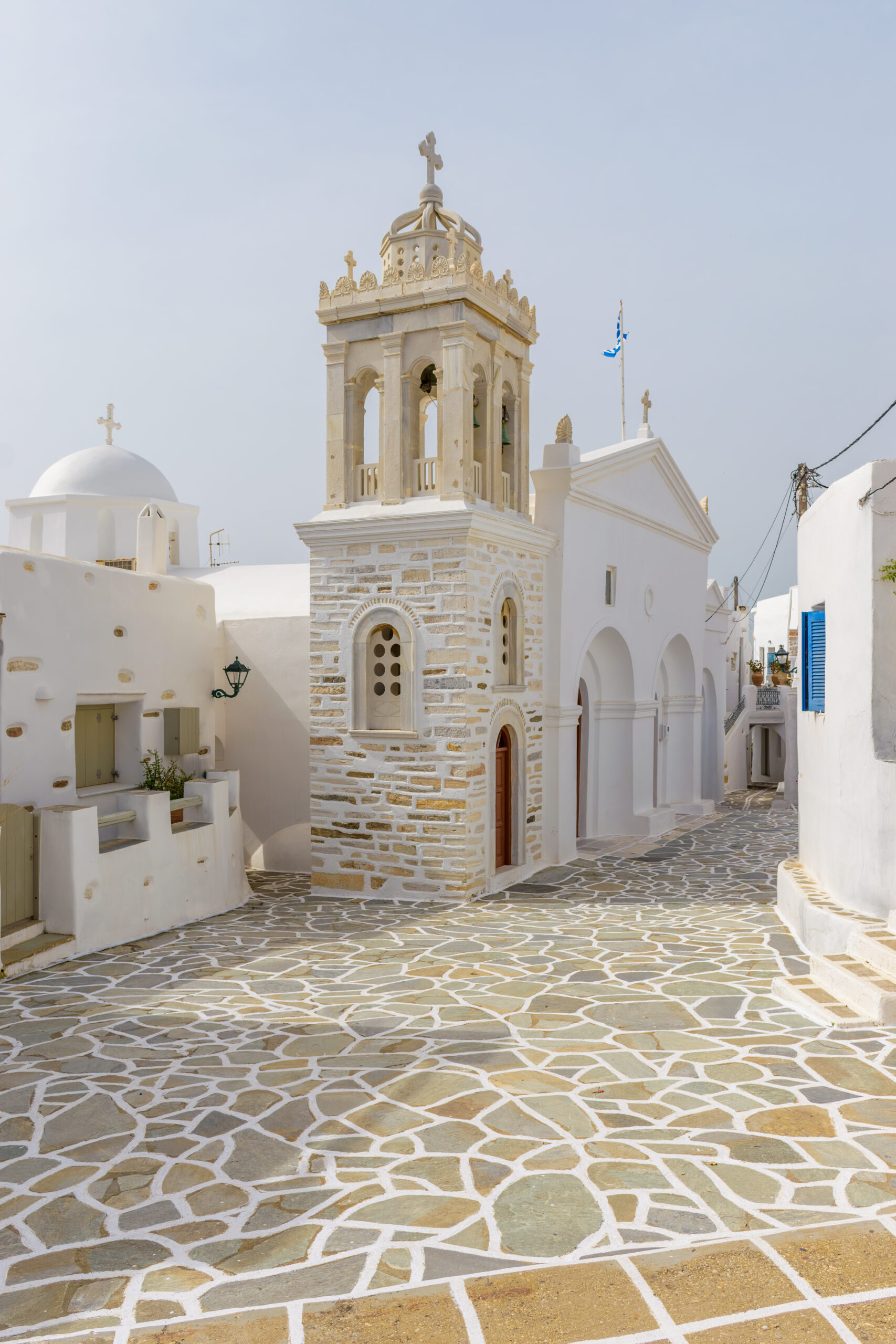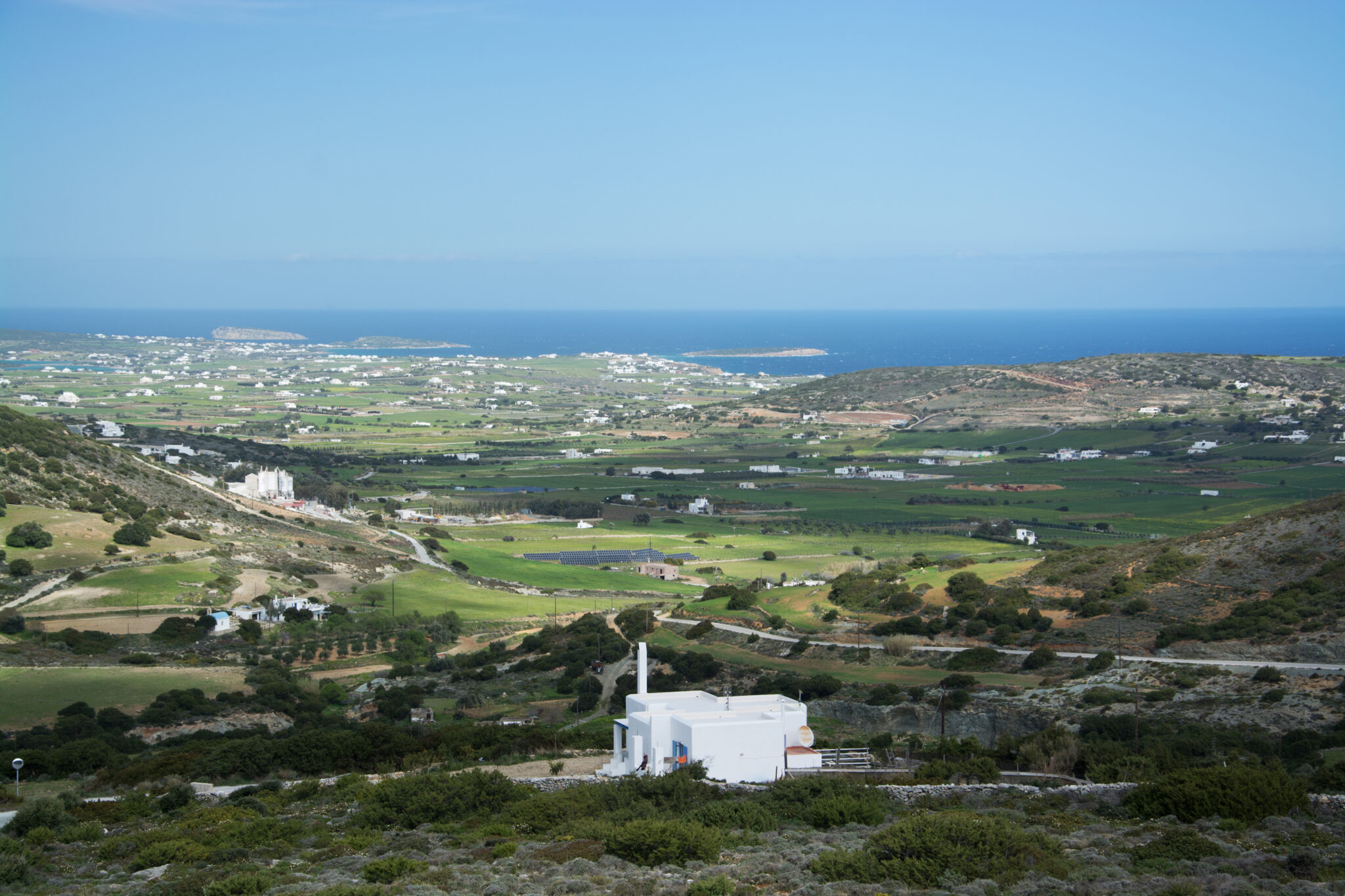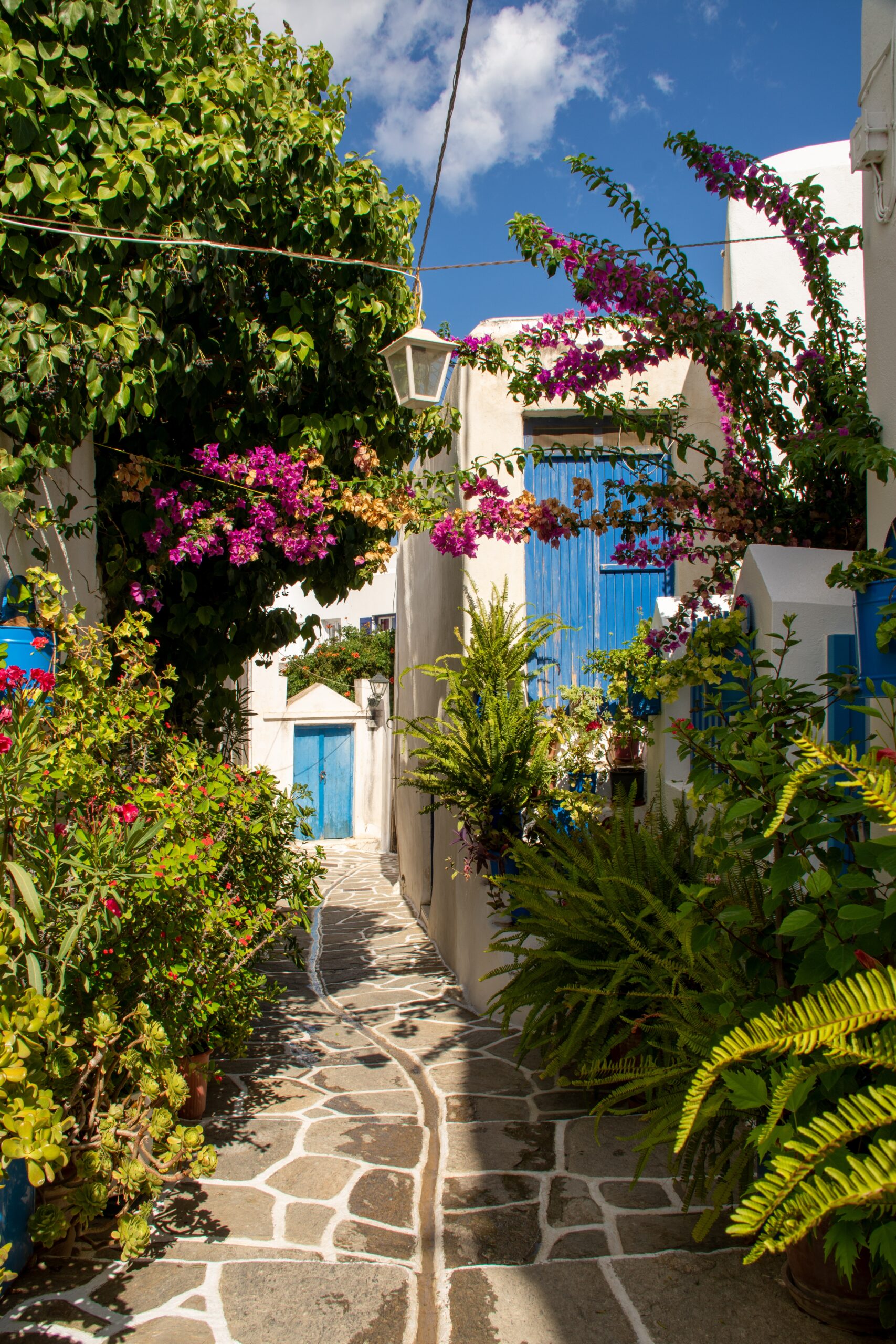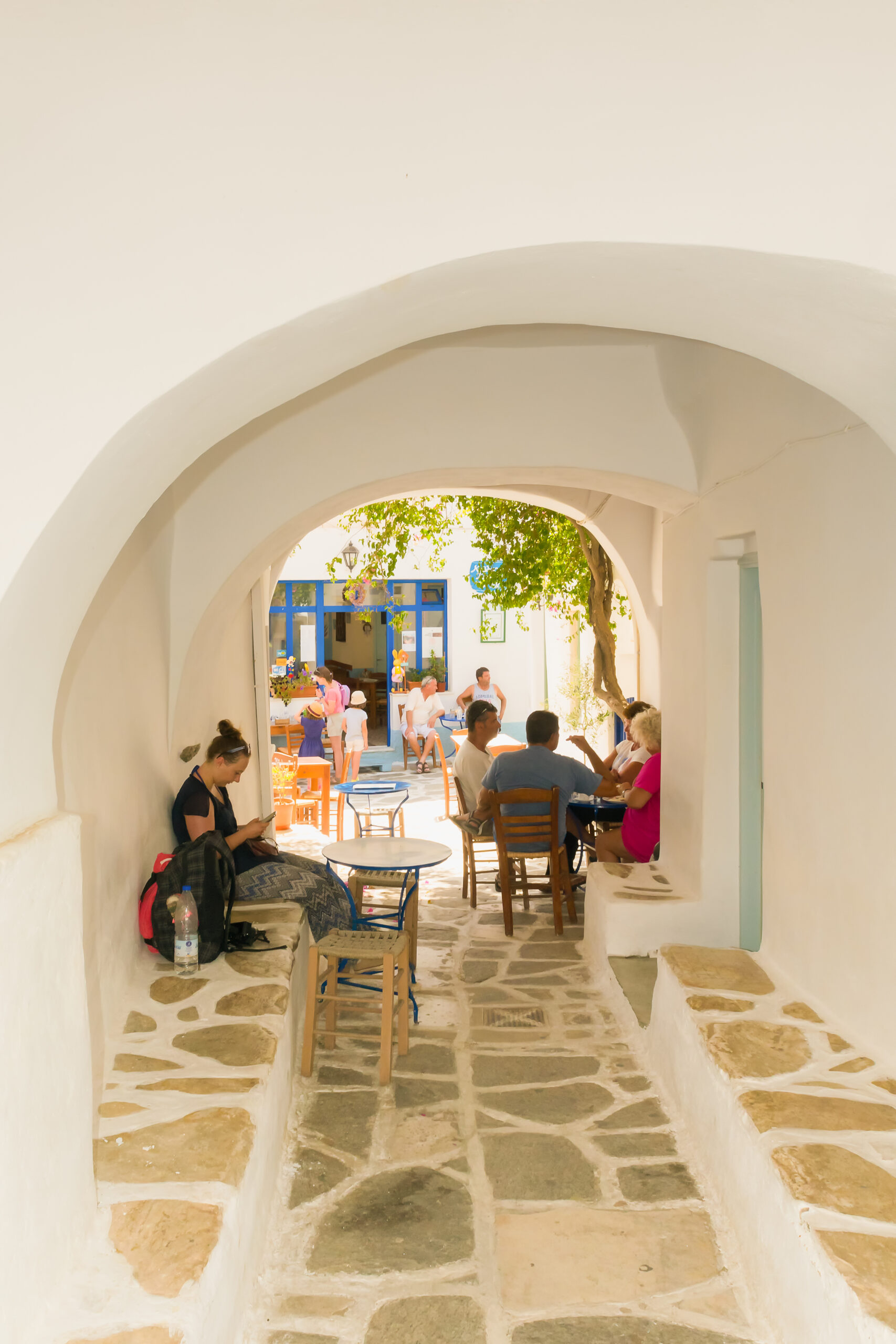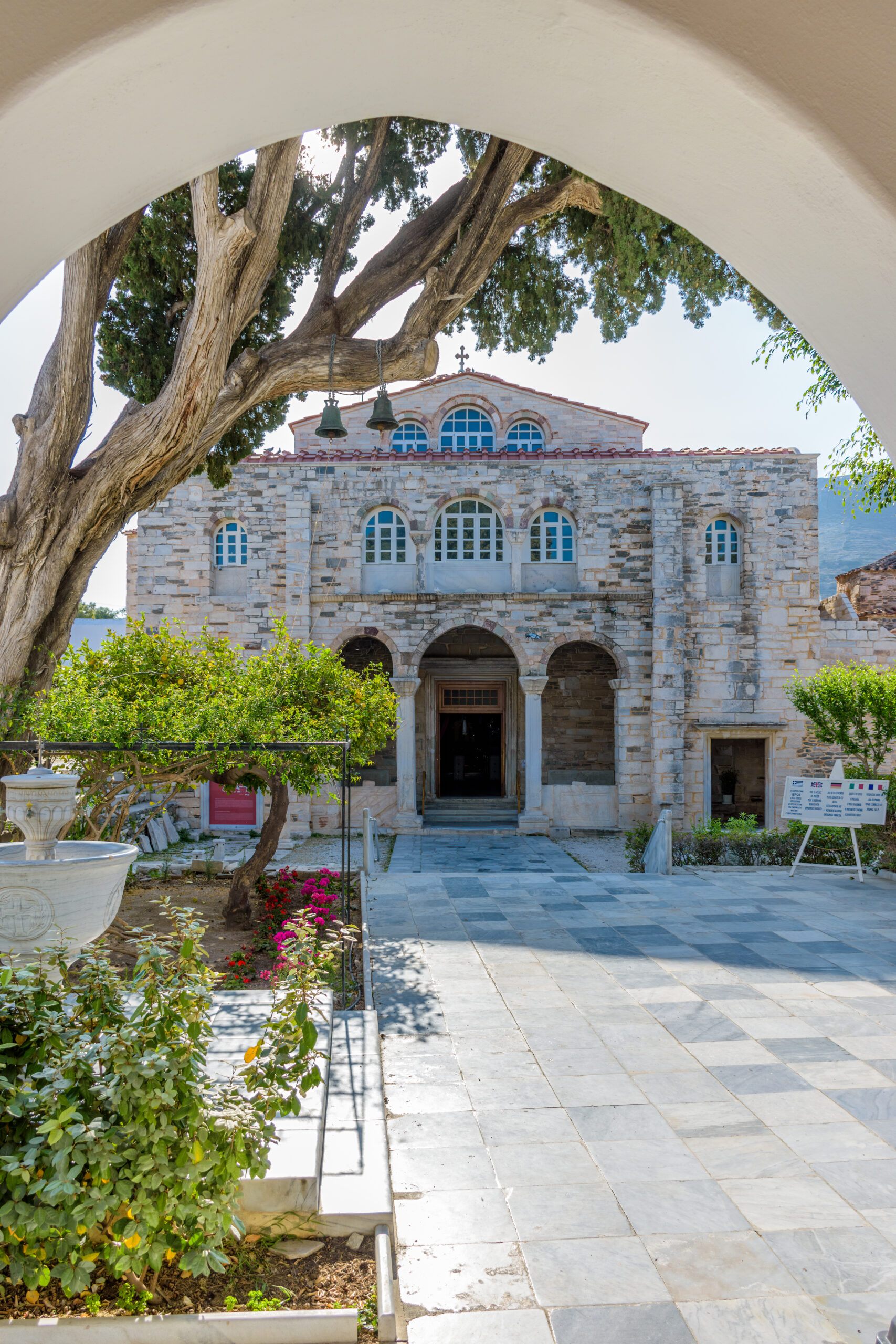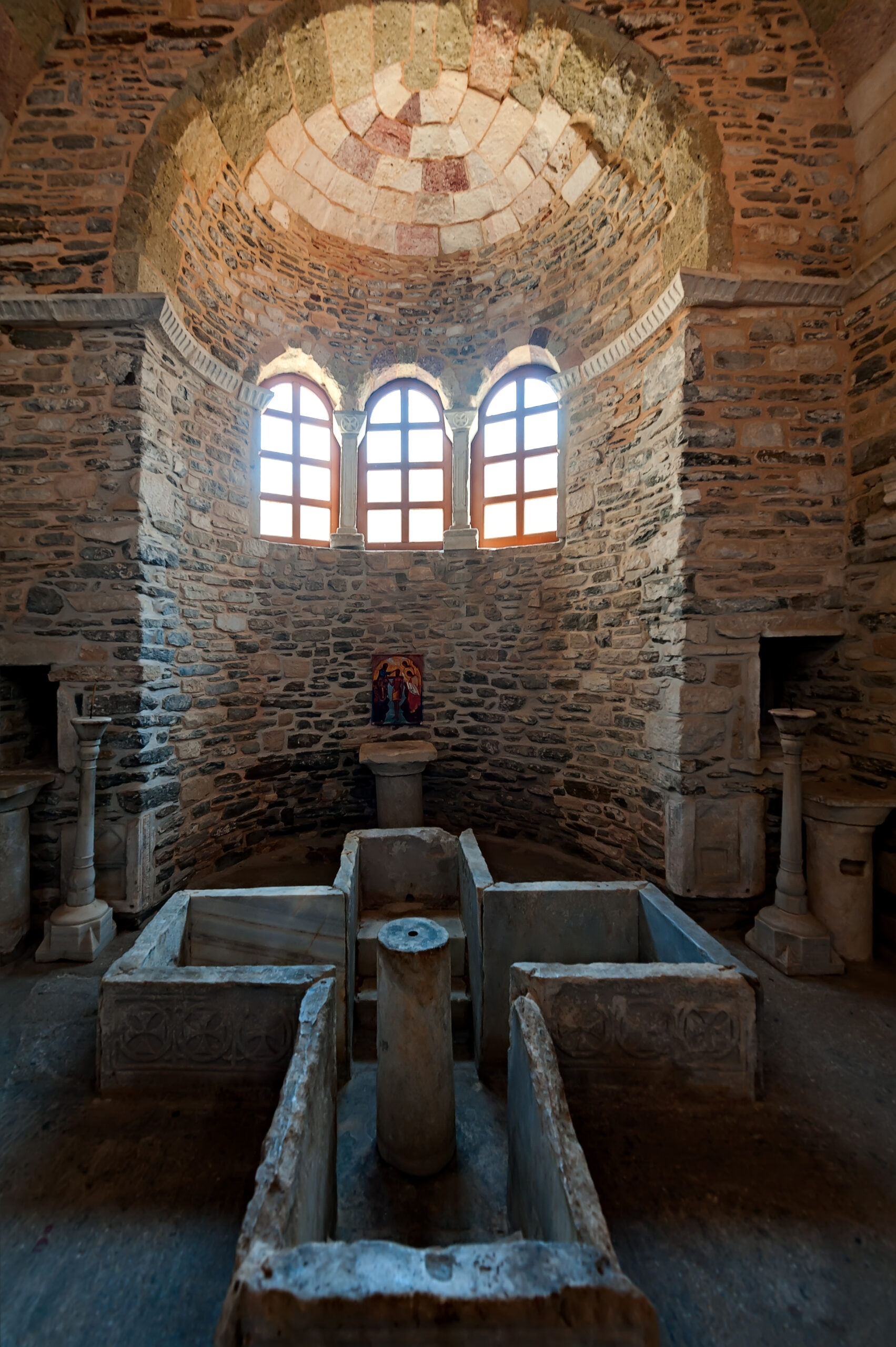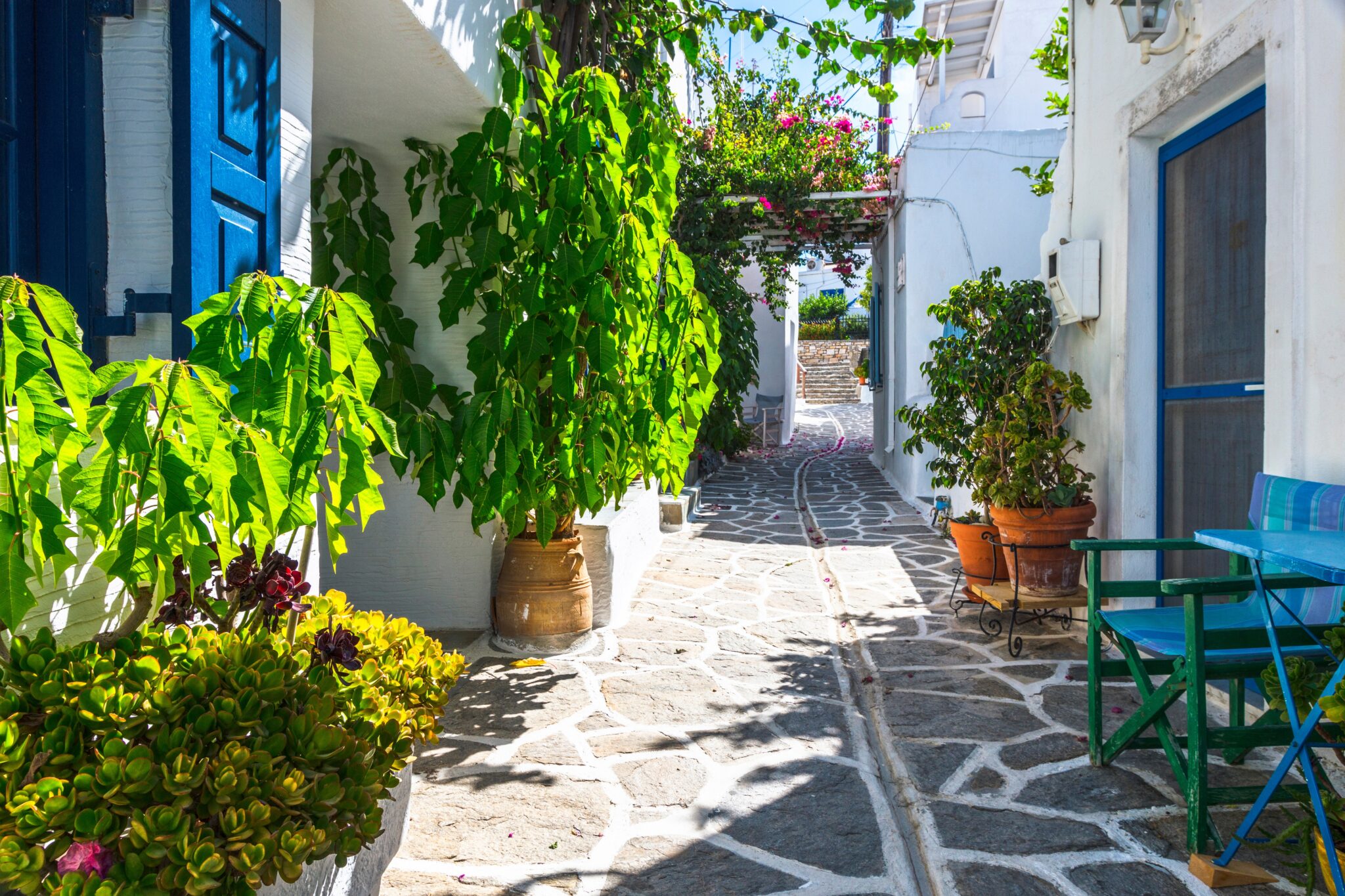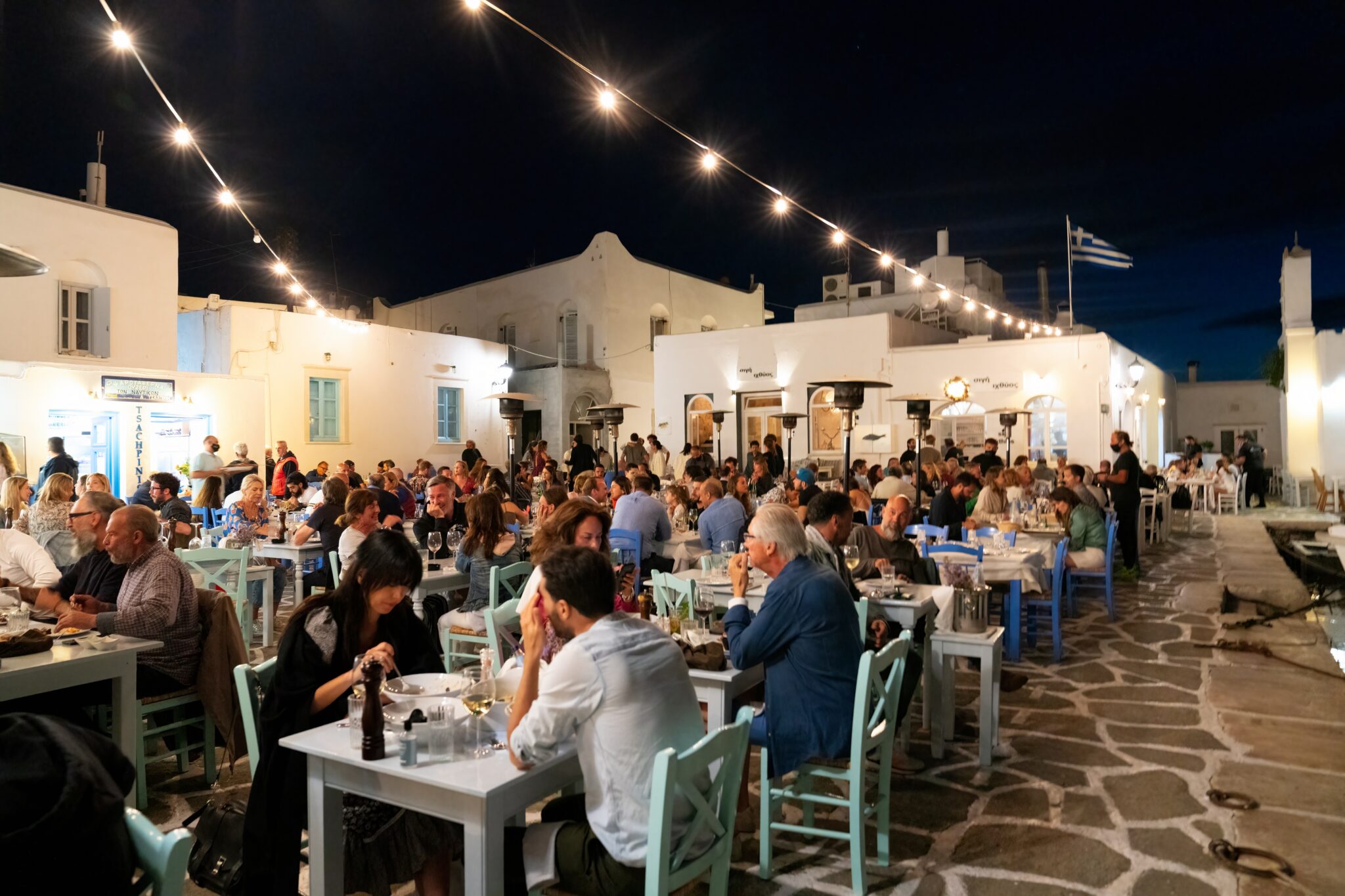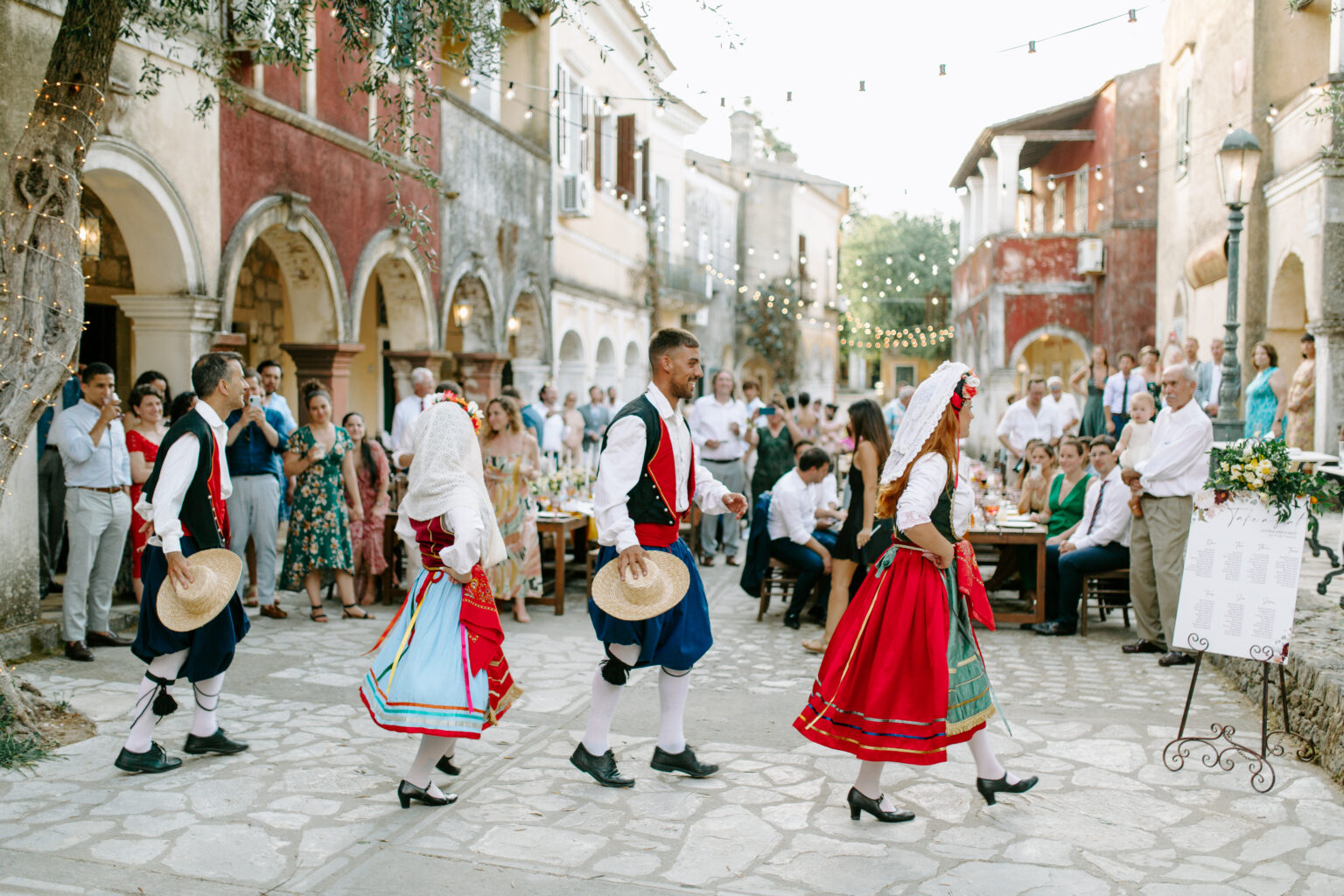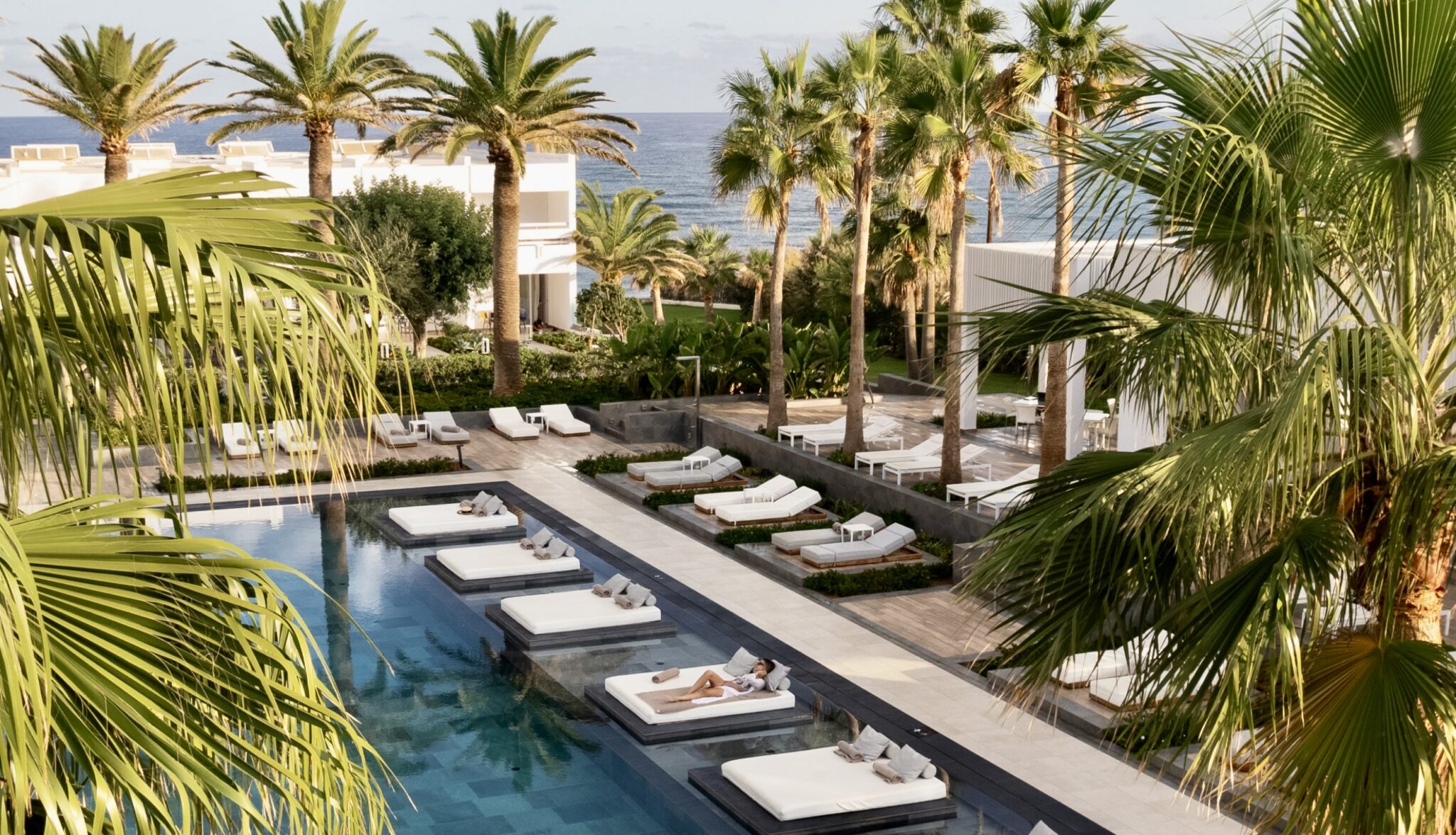Paros, part of the incredible beauty offered by the Cyclades island group, stands out for its unique balance of cosmopolitan ways and island tradition. Entertainment is ideally fused with serenity on this island, a combination that is hard to find in many other parts of Greece.
During the summer months, the island fills with visitors from Greece and abroad, who all enjoy Paros’ pebbled beaches, as well as drinks and meals with views of luxury yachts moored at the Naoussa marina.
By comparison, Paros, during Easter, is a more serene place, more detached from cosmopolitan ways. Reenactments of the resurrection of Christ and the Passion take place on the island (ascent to Golgotha, Judas’ betrayal, the crucifixion). The winding uphill road linking the port of Parikia, also the island’s capital, in the west, with the eastern section of the island, where some of the most renowned beaches of the Cyclades are situated, runs by some of the most picturesque villages of Paros. They may not reach the sea, but are just as popular as seaside spots.
Easter celebrations are bright, spirited and lengthy all over the island, but it would not be an exaggeration to say that these traditions and customs are most intense, as experiences, at Paros’ northern villages. Holy Week is a special time to be in magical Lefkes, traditional Marpissa, quiet Prodromos, or detached Lagada.
Epitaphios decoration on Easter Thursday and its procession on Good Friday in the Marpissa highlands
Marpissa, a small village in the island’s highlands, has managed to attract an increasing number of visitors in recent years, drawn by its serenity and, primarily, its location, not far from Paros’ lovely beaches.
Marpissa, just beyond better-known Lefkes, is very close to the beaches Molos, Kalogeros, Piso Livadi and Logaras. Marpissa is a busy place in summer. This hospitable location, one of the most picturesque spots for experiencing Holy Week, is also an attraction during Easter, when temperatures begin to rise and spring’s fragrances may be sensed.
Here, every Easter Thursday, the women of Marpissa head up to the Metropolitan Cathedral, where they spend the night reverently decorating the Epitaphios in preparation for the next day’s solemn Good Friday funerary procession. It is held late at night along a course with a total of 15 stops at different parts of the mountain. During the procession, Marpissa children engage in reenactments of the Passion of Christ, a custom dating back to before World War II.
Reenactment of the Passion of Christ
Lifelike scenes presenting the Passion of Christ are not only presented in Marpissa, but neighbouring villages too, with children as the protagonists.
Lovely Lefkes, a Paros village renowned for its good food and spectacular views of the Aegean Sea, stages an Epitaphios procession commencing at midnight on Good Friday, a truly special experience. The Passion of Christ is typically staged under a clear, star-filled Cyclades sky, 200 metres above sea level. Reenactments are also staged at Marmara, a village next to Marpissa, as well as Prodromos and Aspro Horio.
Next morning, on Easter Saturday, Marpissa maintains an early, initial Resurrection custom, for which young girls, dressed as angels, stand before village buildings and houses, creating a heavenly setting.
Traditional revythada (chickpea soup) at the village Prodromos
Revythada (chickpea soup) is, by far, the favourite local dish at the village Prodromos, where chickpeas have been cultivated since antiquity. The village’s Revythi (chickpea) Festival is held annually, on the last weekend of July.
During the Easter period, Prodromos locals offer passersby, relatives and friends a plate of hot revythada in their homes or gardens, in remembrance of loved ones who have passed. As a result, the Good Friday sorrow experienced at this quiet village of Paros takes on a more personal note as a sense of mourning that concerns us all.
Ascent to Golgotha at Lagada
At Lagada, one of the more remote villages of Paros, situated at an altitude of 429 metres, Agios Georgios church becomes a meeting point for hundreds of worshippers who congregate to take part in one of the most captivating customs of Holy Week, the reenactment of the ascent to Golgotha, a stirring occasion. An endless line of solemn worshippers slowly heads up the hill with lit candles and bowed heads, all the way to the church.
Easter Saturday Resurrection Service at Ekatondapyliani church in Parikia
The entire island brightens up on the night of Easter Saturday with firework displays marking the culmination of Resurrection services all over Paros.
The atmosphere is magical at the lovely Ekatondapyliani church in Parikia, opposite the port, where masses gather from early in the evening.
If preferring an alternate Resurrection experience, the island’s small and more remote churches offer services at otherworldly settings, detached from the world and technology, lit candles providing the only light to the sound of chiming bells.
Celebration of Love
Easter Sunday celebrations are lengthy and open-hearted throughout Greece, including everywhere on Paros. Celebrations begin early at the island’s old port, Naoussa, the location of some of the most popular restaurants of the Cyclades. Tables are set from end to end, wine and tsipouro flowing freely as the meze and meat dishes are prepared. Participants become one and typically dance on until late, while some revellers even end up singing on the rooftops of buildings.
Even so, the picturesque villages at the island’s highlands represent the heart of the celebrations, especially Marpissa, the location of the biggest celebration of all, dubbed the “Table of Love”. Groups of local musicians play traditional music from the morning hours at the square. Locals go about grilling on spits in their yards, treating passersby to meat pieces, various delicacies and drinks in the most generous way imaginable. After all, is this not the true meaning of Easter? Love and solidarity for all.
Read also:



